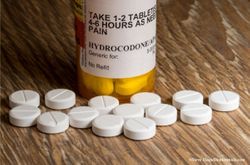Drug Use in America: Which States are Problem Areas?
Which state has the highest percentage of teenage drug users? Or the fewest opioid prescriptions? Answers from a new report, here.
Drug overdose death rates in the US continue to be a public health burden, especially with newer and deadlier synthetic opioids like fentanyl hitting the illicit market. According to research from the US Centers for Disease Control and Prevention, the age-adjusted overdose death rate involving fentanyl increased 279% between 2016 and 2021. Moreover, during the same period, rates of overdose deaths involving methamphetamine more than quadrupled and those involving cocaine more than doubled.
To determine where drug abuse is most pronounced, a new report from WalletHub compared the 50 states and the District of Columbia across 20 key metrics, including arrest and overdose rates and opioid prescriptions. Each metric was graded on a 100-point scale, with a score of 100 representing the biggest drug issue. Find out the results in the slides below.




















